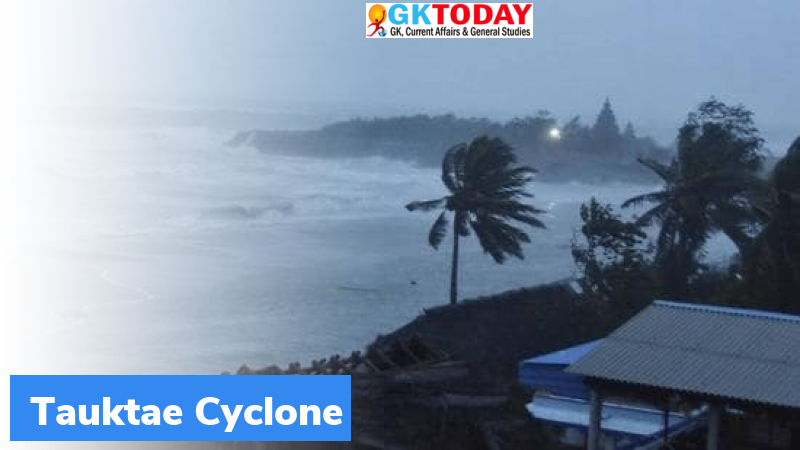Tauktae Cyclone forms in Arabian Sea
Tauktae Cyclone is the first cyclone in 2021 in India. The Kerala Government has issued “Red Alert”.
How are Cyclones formed?
- The warm and moist air in the ocean rises up. As more and more air rises up, it leaves less air. This creates an area of low pressure. The pressure around this area is high. The air from the surrounding areas pushes into the low-pressure area. Now this air gets warmed up and rises. The cycle continues.
- As the warm air rises up it cools and condenses into clouds. The whole system of wind and clouds spins and grows. This is aided by the ocean heat and evaporating water.
- As the system rotates faster and faster, an eye is formed at the centre. The eye is clear and calm.
- When the system rotates at 63 kilometre per hour, it is called “Tropical Storm”. When the wind speed reaches 119 kilometre per hour it is called tropical cyclone or hurricane.
Conditions for Cyclone Formation
The following conditions favour cyclone formation:
- The Surface Sea Temperature increases to 27° C and higher.
- Presence of Coriolis force
- Differences in Vertical wind speed
- Upper divergence above the sea level system
- Low pressure area
- Favourable Madden Julian Oscillation
- Ocean heat potential
Madden Julian Oscillation
It is an oceanic atmospheric phenomenon that affects the weather activities in the earth. It is a pulse of clouds, winds, rainfall and pressure near the equator that occurs every thirty to sixty days. It is prominent over Pacific Ocean and Indian Ocean.
There are two phases of Madden-Julian Oscillation
- Enhanced Rainfall Phase
- Suppressed Rainfall Phase
Month: Current Affairs - May, 2021


